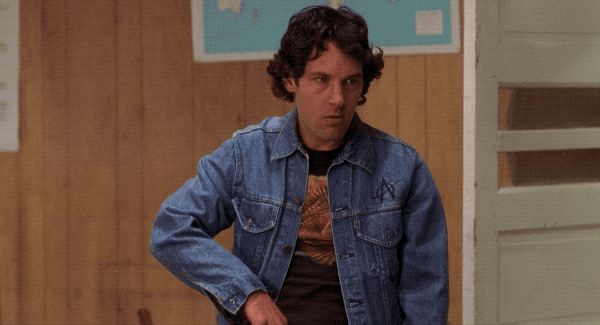Frankly Perfect
Let's wrangle it.
It’s not proofreading, and it’s not rewriting – it’s the witchy wave of a wordy wand that brings all of those disparate patches of brilliance into a single, cohesive whole.
And I do it all the time so I’m gonna hold your hand through it. Cute ay.

A writer’s job is pretty intense, let’s not pretend it isn’t.
You’ve gotta consider delivery, structure, messaging, persuasion, reader intent, client needs …blablabla….and that’s all before you delve into the actual subject material.
Then you’ve gotta wrangle it all together using your part innate, part hard-won mastery of language, proofread it, and then…edit your brain-baby. Chop chop chop.
Brutal.
So you write the thing, and then just chop it up? Yea, and it feels rough, but once you put your bad bitch editing hat on I promise you’ll actually end up loving it. I swear on all things Frankly.
The top Frankly Write rule: your edit is non-negotiable.
Good? Good. With that sorted, let’s get into what you came here for.
I follow the same fundamental process whether I’m editing website copy, advertising copy, or blog content. Of course, these formats are all different both design-wise and stylistically – but they’re all words and they all deserve to be polished up to look their best.
Alright, you ready? Take my hands….don’t make it awkward just go with it.
Step 1: Scanning
This is a quick scroll-through to get you nice and familiar with the copy. Snuggle up. Sneak an arm around it. Lean in a little. NO NOT THAT MUCH. Just in a chill way.
-
Scan to get an idea of the whole piece and how it fits together.
-
Add comments in the margins if you want to highlight parts to check later or have thoughts along the way.
-
If you notice any typos, fix them – but don’t fixate on them. The final proof comes later.
Step 2: Format Check
This is another scan, but this time you’re looking at the way it’s physically laid out. Yes, it’s going to look a whole lot different once it’s live on your website, but one of the first things digital strategists learn is that it’s never a good idea to leave these things to chance or “common sense”.
Chances are, what you have in mind may be quite different to the person publishing, and perhaps different again to you, a week later, when you get around to publishing it yourself.
-
Check the headings are where they ought to be.
-
Look at the paragraph length – is it nice and short for the web? Highlight sections that look too large.
-
Bullet points, lists, etc etc? Make sure they’re all formatted consistently – or as consistently as you’d like them to be once published.
Step 3: Structural Check
When it comes to copywriting, no matter what you’re delivering, you’re taking the reader on a journey.
By the time you get to editing, you can take for granted that all of the information is correct and that it’s accompanied by the requisite flair, but heads up: as an editor, the structure is usually going to be your biggest hurdle.
-
Actually read it for the first time. Slowly. Consider the journey. Is everything in the right place?
-
If something feels out of the flow, take it out and move it to the bottom of the document. We call this the “cutting room floor”.
-
Play with moving sections around to see what it does to the flow. You can always CTRL+Z if it turns into a mess.
-
You’re done when your copy matches the journey you want your reader to take.
Step 4: Read-through
This is the part where you tidy it all up.
-
Read through it once. It should be pretty bloody good.
-
Fix up any typos or errors.
Step 4: Walk Away
Walk away from it for a bit. Go for a literal walk. Have a cup of tea. We don’t know what you need to do to get into that elusive “stare out the window” state, but whatever it is, do that.
-
Navel-gazing or something.
-
Pat a cat.
The last step is of course a final read-through, where you come to the piece once again with fresh eyes to marvel at the thing of beauty you’ve been putting those final touches on.
-
Read through it and imagine you’re reading it on a website. Apply any last touch-ups, but this is really just a “see it the way a reader will see it” step.
-
If it’s a huge mess, that’s your fault and you’ll have to start from step one again.
That’s it! Well, that’s how I do it anyway.
Cool so… you can let go of my hands now.
x

